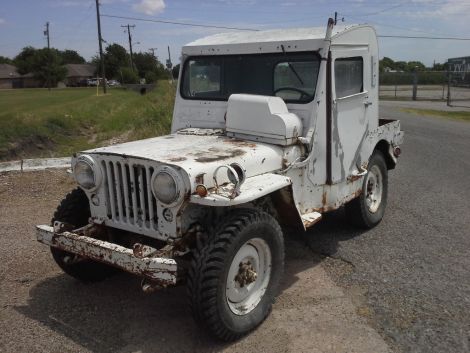
Speaking of M38s, and M38s, this M38 is for sale. And it’s...quirky.
First thing I noticed wasn’t the ungainly growth behind the hood, but the awkward hard top/bed combination.
However, that’s not the cool thing I learned more about.
Instead, let’s take a closer look at the wart.
First clue as you scroll through the images:
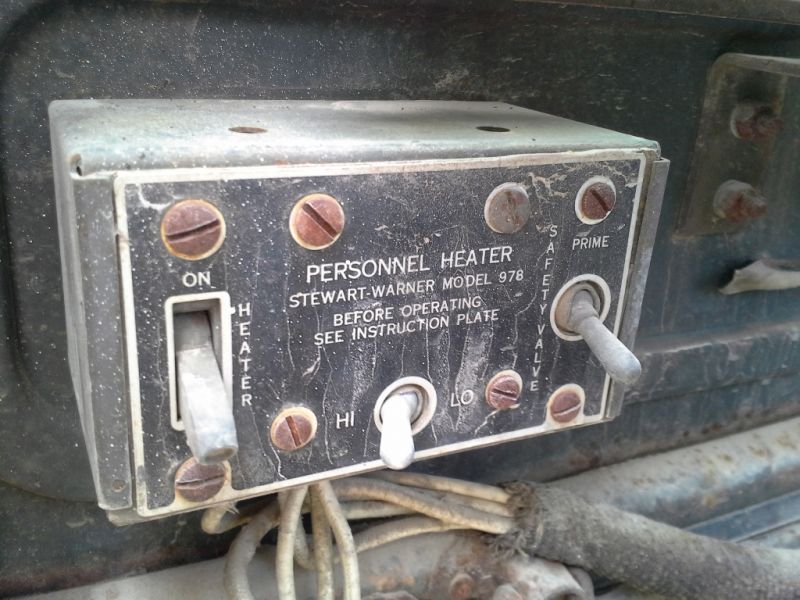
Well, I guess that’s not so much a clue as a giveaway.
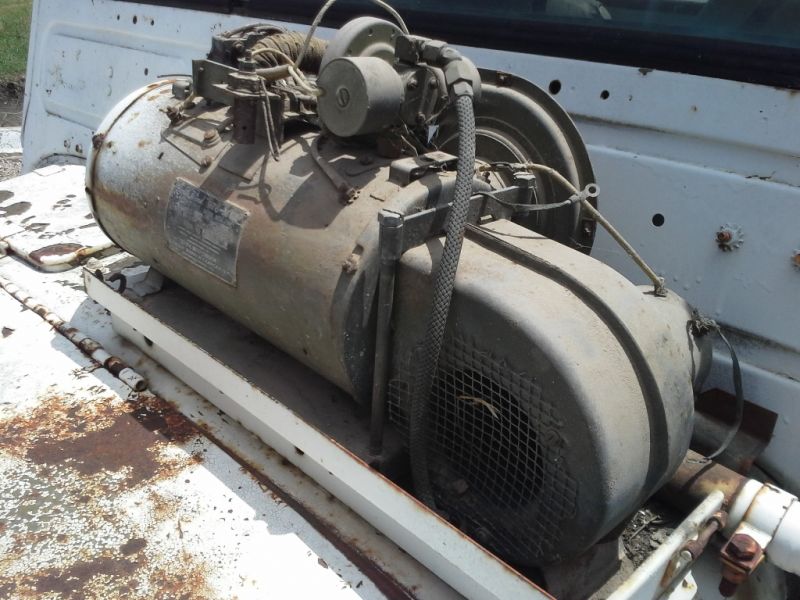
A look at coverless wart.
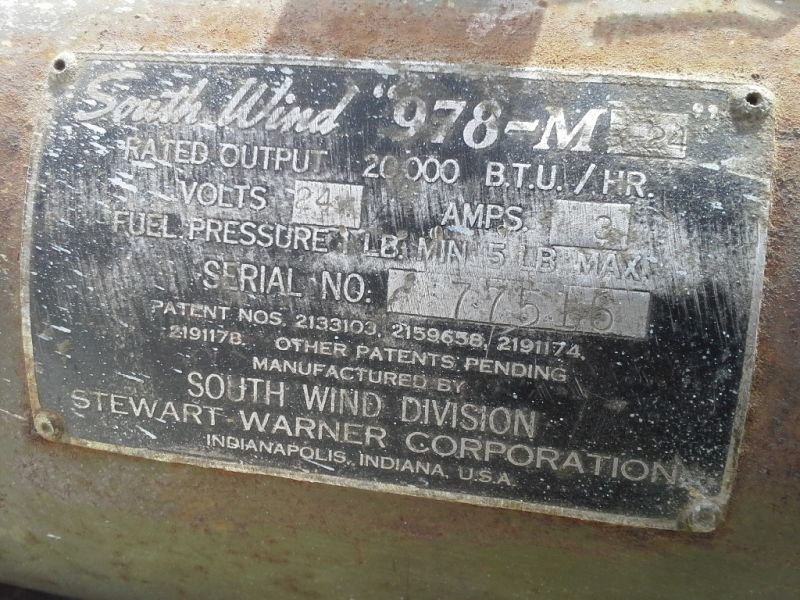
Would you look at that! Indianapolis! Where I is, and have been most of my life, and almost certainly will be stuck here forever!
Anyway, I suppose it’s not unexpected that a Minnesota Jeep would have a hard top and graft-on heater. Wimp.
I imagine some of you are already familiar with the manufacturer, but this was my first exposure to them, and researching them sent me down a bit of a rabbit hole.
Stewart-Warner got in on the automotive accessory game early: their speedometers were used in the Model T, and they’ve been making automotive gauges ever since. They started and were headquartered in Chicago, and while the Wikipedia entry doesn’t mention it, the badging indicates they had a factory in Indianapolis.
Looking for more information about that factory led me to a pretty cool guy.
Oran Mitchell worked at the Stewart-Warner factory in Indy, and he got to work on a different piece of transportation history.
Specifically, he helped build a heat exchanger that landed on the moon, as part of the Apollo 11 lunar module.
Stewart-Warner had been awarded a contract by NASA to make the helium heat exchangers for the Apollo program. The exchangers allowed the lunar module to descend correctly and land gently. He used the designs provided by NASA, and assembled the 10-inch by 12-inch out of titanium and other alloys. The pieces had all kinds of odd shapes sticking out of it, and creating one took a considerable amount of time.
The pieces were soldered together with gold dust. Mitchell helped build several copies of the part, pressure-testing them before shipping the heat exchanger to NASA.
Curiously, the company’s slide show omits this stellar bit of hardware; I’d recommend checking it out nonetheless, because there are some gorgeous classic car dashes.
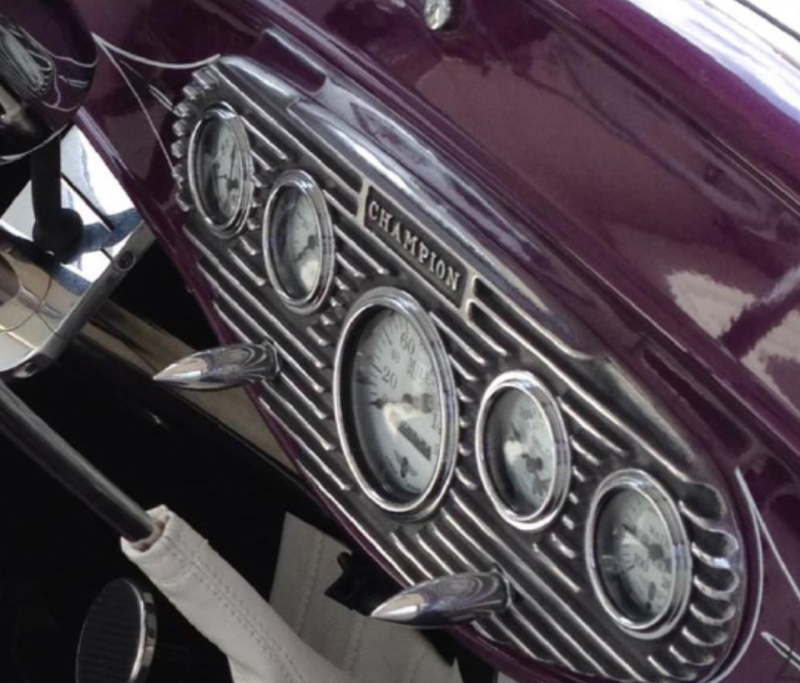
You may recall an earlier rabbit hole of mine:
Something I noticed as I skimmed through the Stewart-Warner slide show was a WWII ad. This isn’t the same one, but it makes me think it might be time to revisit the theme.

They clearly were not constrained to automobile parts; they also sold tube radios and manufactured munitions during WWII.
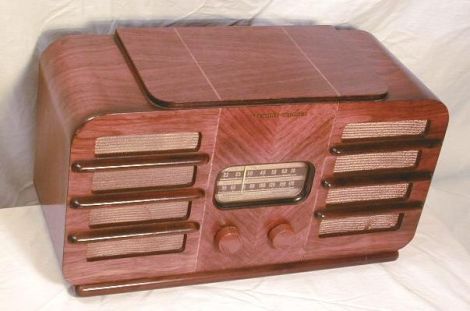
The final rabbit hole wasn’t really any of the above, however, at least not directly. The rabbit hole that currently has me up at 2am is the collection of other, long-lost business names I’ve stumbled upon from the first half of the 20th century.
I found a document (warning: PDF) capturing the memories of several people who grew up on the west side of Indianapolis; it was the only place I could find with approximate dates for the founding of the Stewart-Warner presence in Indianapolis.
In 1914 Stewart-Warner built its Power House and Gear Plant. The main plant was built in 1918 with a large addition in 1927.
From that same west Indianapolis document:
Another of the earliest industries was the Perry Manufacturing Company known as the world’s largest cart, wagon and carriage company. This company later built the Marion Motor Car. Martin became associated with Perry, and then later it was known as the Perry-Overland Company which was bought by the Chevrolet Company.
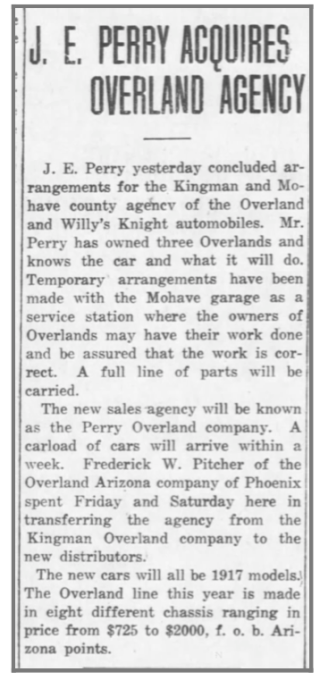
(As far as I can tell, “Martin” in that quote should be “Marion”.)
My attempts to find any more information about Perry-Overland have failed. Wikipedia mentions the Indianapolis Marion Motor, but just its dates of existence, 1904-1915.
I did find this article from the Mohave County Miner in Arizona, October 7 1916, but it seems unlikely that this Perry-Overland and the Indianapolis Perry-Overland are the same company despite existing at roughly the same time.
An even less-likely candidate I include just for curiosity’s sake: it is, apparently, a Willys-Overland dealer in Perry, Oklahoma. June 21, 1923. Maybe some Oppo has ridden in an Overland Red Bird.
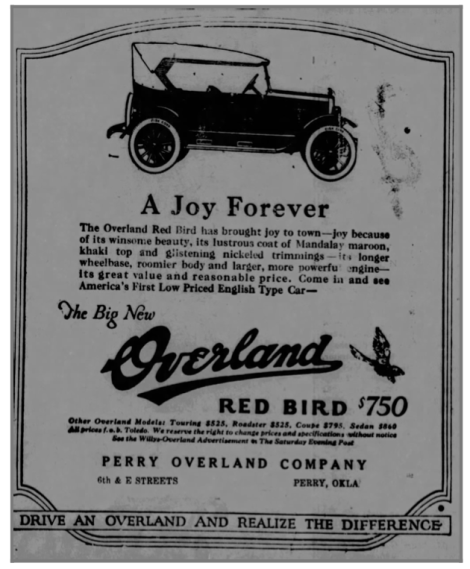
One car company indirectly mentioned in that document that does have some information online is the Marmon Motor Car Company.
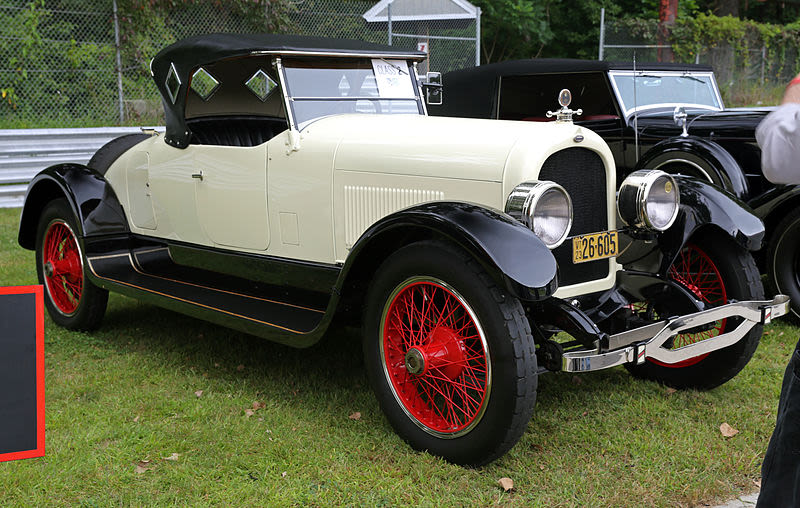
That’s a 1923 Marmon 34B 2-seater Speedster. No, I’d never heard of it either. (Or, heck, given my general automotive cluelessness I’m the only person here who hasn’t.)
Marmon manufactured their cars on the same property that Eli Lilly currently manufactures drugs; I’ve worked at and around Lilly for a significant chunk of my career, coincidentally enough.
Another Indianapolis auto company mentioned in the document is Pathfinder; here’s one of their ads. A super-standard poem in steel, one of the most ultra-beautiful and sumptuous cars ever built.

Another Indianapolis transportation company in that document is Ellis Trucking. Can’t find anything online except, again, through newspapers.com (no, this really isn’t an ad for the site, I just every few years find myself diving into their archives).
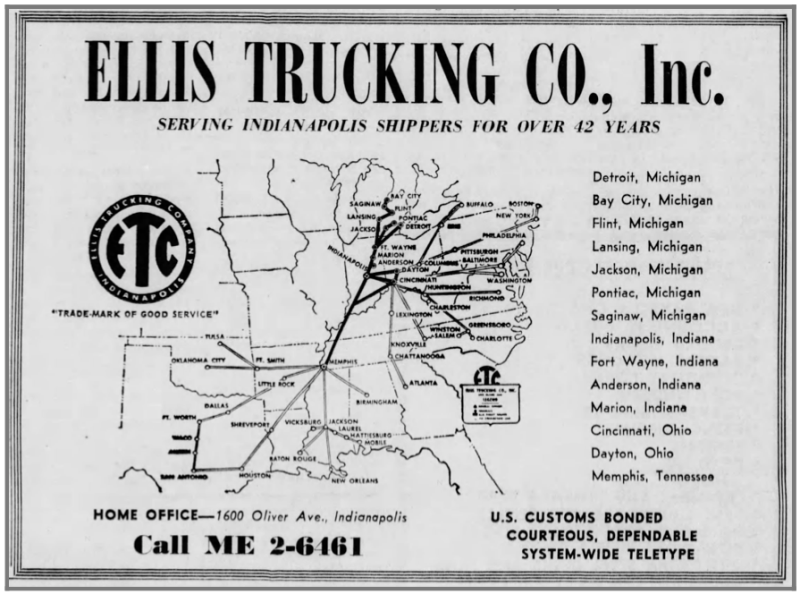
Ellis would have greatly appreciated the new extension of I-69 through southwest Indiana; they just missed it by 50 years.
Once again, I have no idea what happened to Ellis: swallowed, collapsed, no clue. I did find a mug, however; for $16 I might just have to grab it as a keepsake.
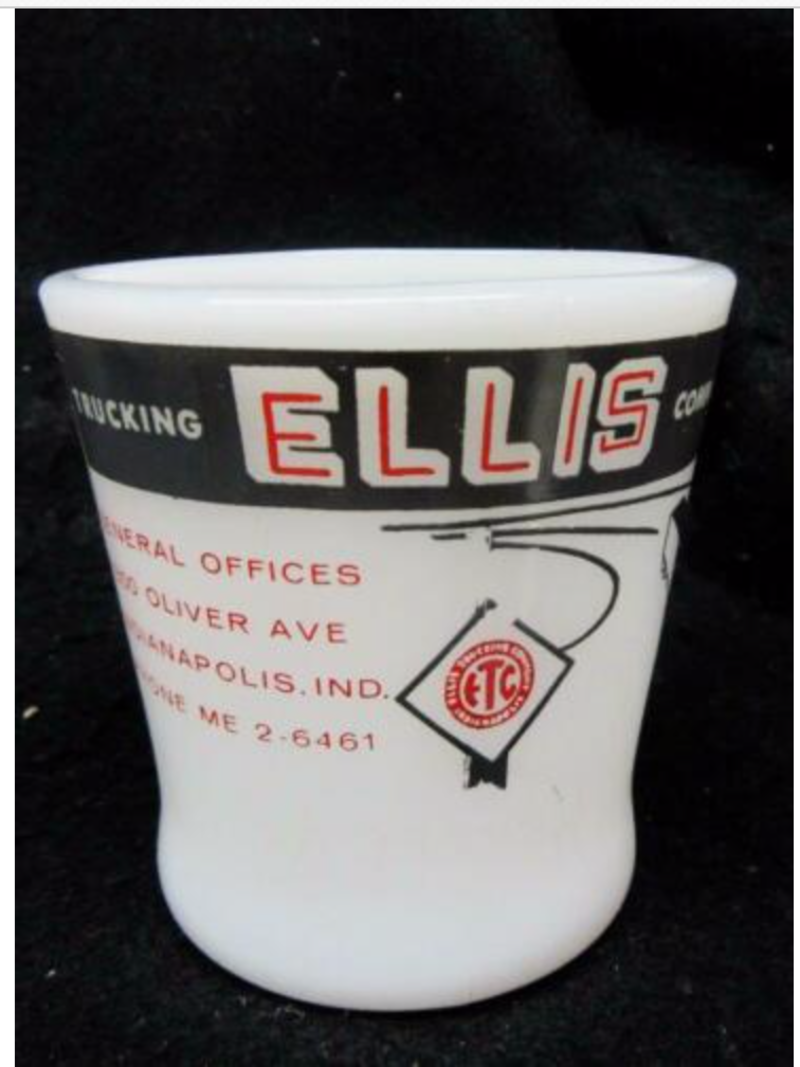
I have no real point to this, other than I find it somewhat melancholy how fragile history is. Wikipedia has (or had, last time I looked 15 years ago) excruciating detail about the Tour de France, as enthusiasts recorded every tidbit of the event in real time, but a company like Ellis or Perry-Overland, who had the misfortune of being founded and vanishing before the Internet was a thing, practically never existed. If it hadn’t been for someone writing down some memories in 1979 and that document landing online, I never would have known about them.
One final bit of Indianapolis history, basically a note to self for me to try to find out more about these... from the Indianapolis Times, an evening paper that closed up shop in 1965, this page from 1925 has recommendations from the chamber of commerce for items to be added to letters to promote the city. (Speaking of the Internet, dissemination and discovery of useful information was considerably harder 100 years ago.)
- Indianapolis—B.Y.P.U. National Convention, July 8 to 12
- Indianapolis—Home of the John Herron Art Institute
- Indianapolis—National Dairy Show, Oct 10 to 17
- Indianapolis—Motor crossroads of the nation
- Indianapolis—Almost 6,000 acres added to city since Jan 1
- Indianapolis—Thirteen acres added to city parks in 1925
- Indianapolis—A city of inspiration
- Indianapolis—America’s largest inland city
- Indianapolis—has world’s largest outdoor swimming pool
- Indianapolis—Covers an area of sixty square miles
- Indianapolis—Has ideal labor conditions
- Indianapolis—Home of The American Legion
- Indianapolis—Mecca of America’s home builders
- Indianapolis—Has world’s largest shock absorber factory
- Indianapolis—Has 4,300 retail stores
- Indianapolis—America’s economic distribution point
- Indianapolis—Has model downtown business district
- Indianapolis—Has world’s largest motor bus terminal
- Indianapolis—Home of Butler University
- Indianapolis—Unexcelled warehouse and railway terminal facilities
- Indianapolis—A picnic proof city
- Indianapolis—A city of neighbors
- Indianapolis—logical distribution point of America
- Indianapolis—A pivotal industrial center
- Indianapolis—Seventy-five incoming mail trains daily
- Indianapolis—Indiana’s wholesale center
Now, don’t you want to know what the world’s largest shock absorber factory was in 1925? Rabbit holes, commence!